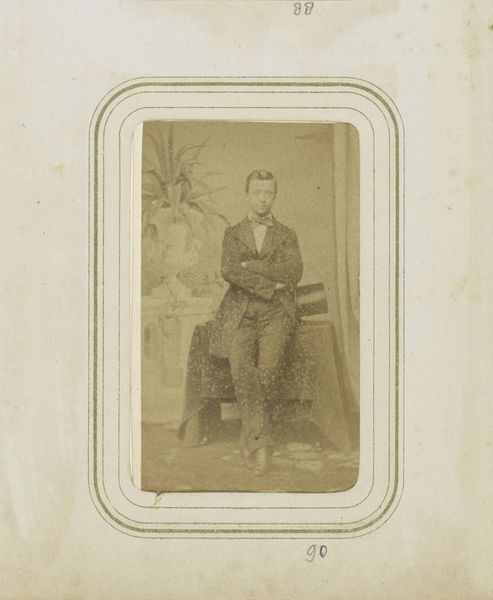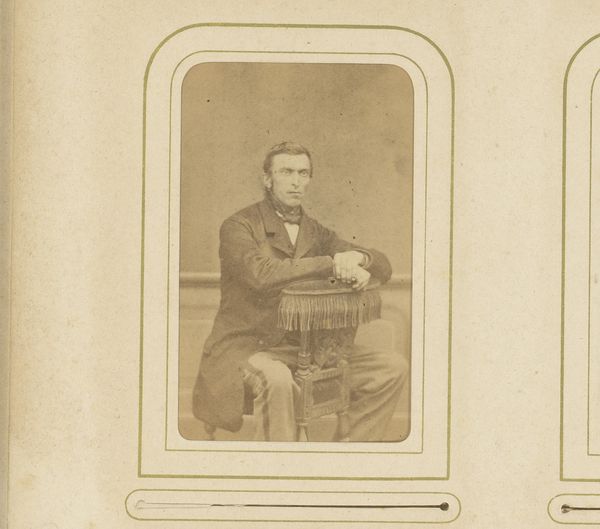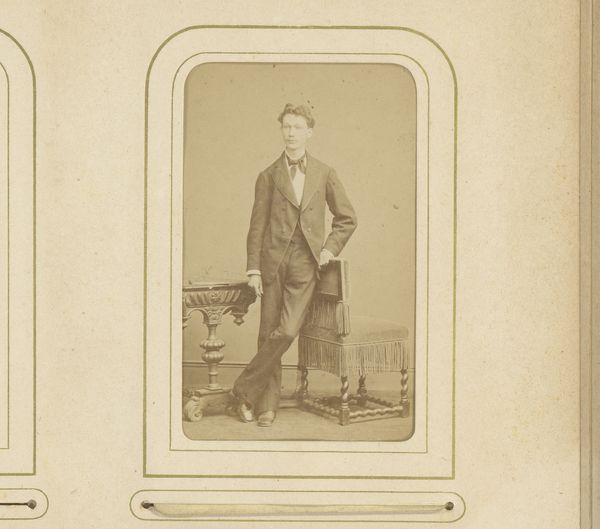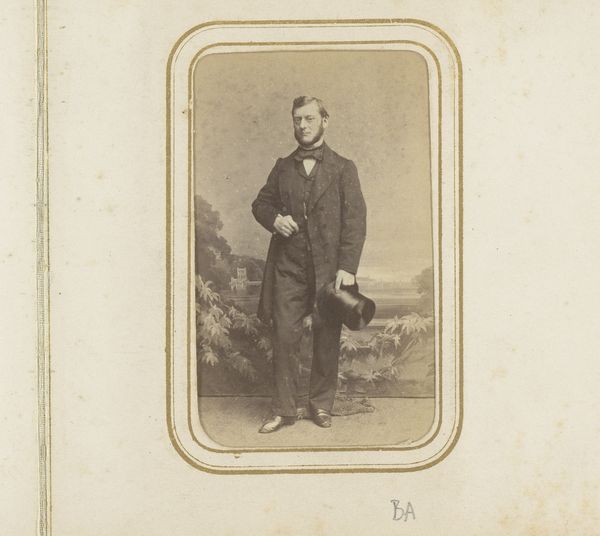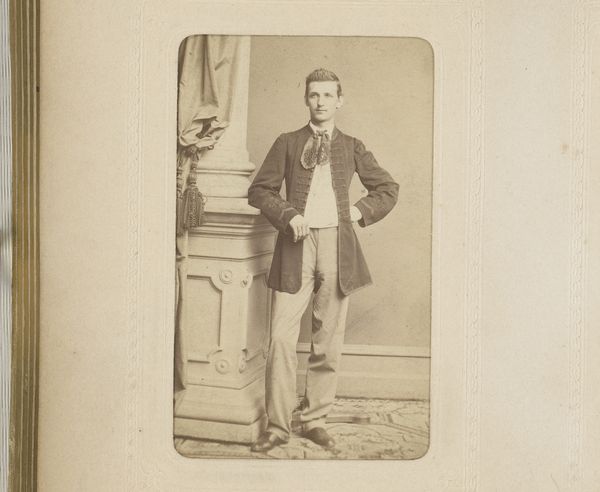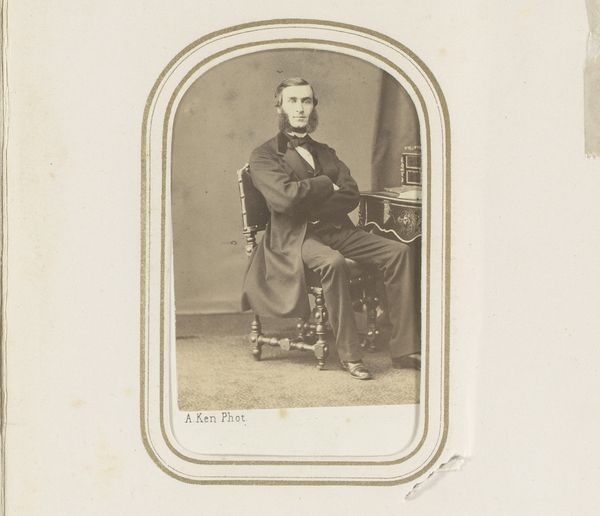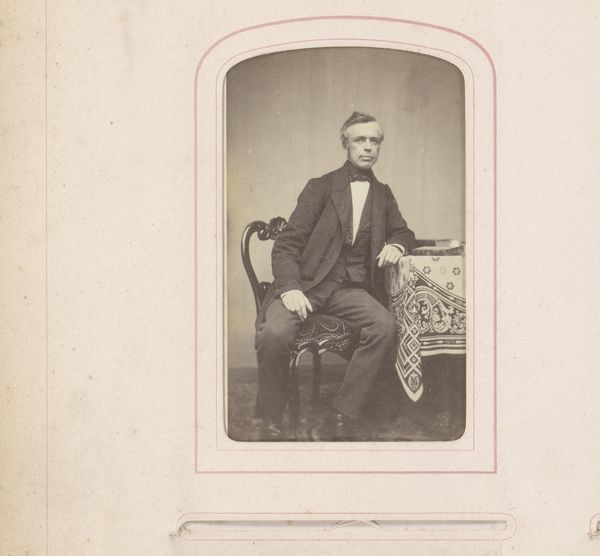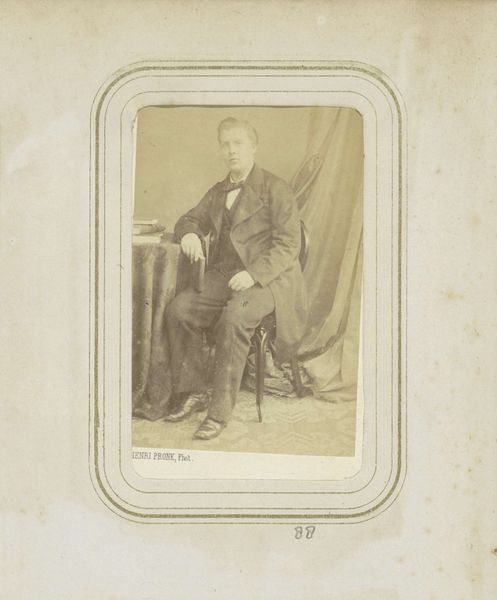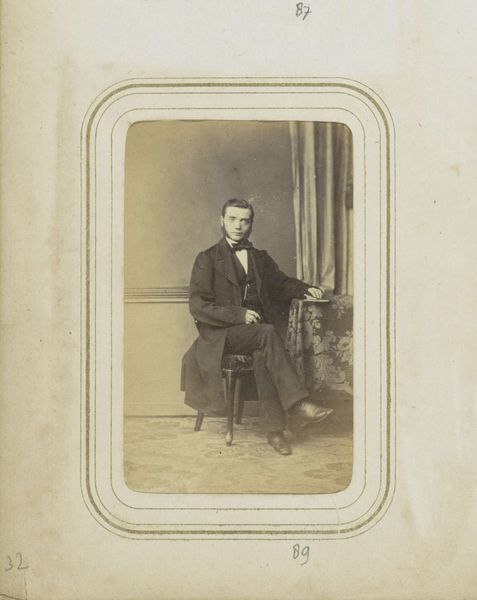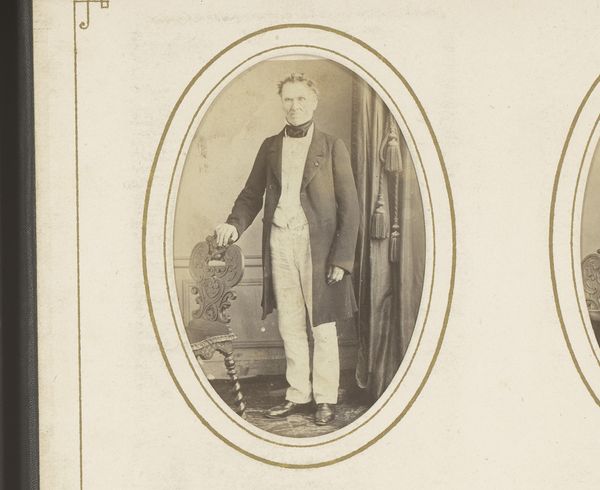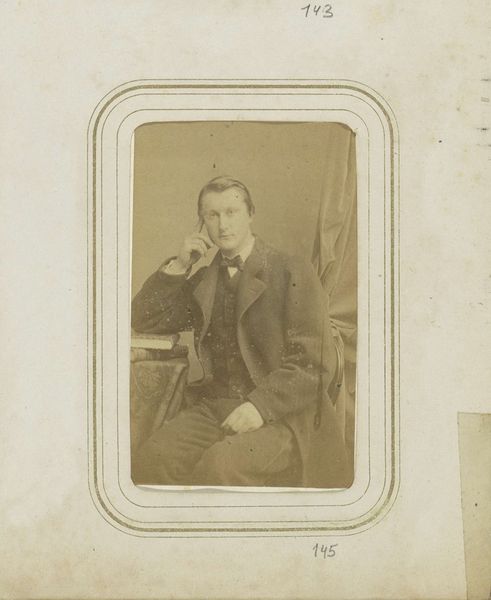
daguerreotype, photography
#
portrait
#
daguerreotype
#
photography
#
old-timey
#
19th century
#
genre-painting
Dimensions: height 83 mm, width 51 mm
Copyright: Rijks Museum: Open Domain
Editor: Here we have "Portret van een zittende man met fotoalbum," a daguerreotype photograph made sometime between 1866 and 1869 by Roemer & Perrin. The man looks very serious, almost stern. What historical context am I missing here? Curator: Well, early photography was an expensive and time-consuming process. Posing for a portrait was a significant event, often seen as a way to document and project status. Notice how he is presented -- what does his pose and attire suggest to you about his place in society? Editor: He's clearly wealthy, with his tailored suit and the photo album he's holding. Was photography becoming more accessible to the middle class at this time? Curator: Precisely. While daguerreotypes were initially exclusive, photographic technology was evolving rapidly, which, in turn, fueled a growing market. Think about what owning a photo album meant in the 19th century. How did this object shape social memory and relationships? Editor: It's a really interesting thought – owning a piece of technology and what that means to them as an individual at that point in time. The fact he has chosen to include it almost feels like showing it off. Curator: Exactly! It's about demonstrating a connection to modernity, displaying social capital, and, of course, curating your image for posterity. And it shaped the entire cultural landscape by turning everyday individuals into historical figures, at least for their families. What do you make of that now? Editor: I've certainly gained an appreciation for the intersection of social status, technology, and representation in this period. I’ll think about that “snapshot” of a society from now on.
Comments
No comments
Be the first to comment and join the conversation on the ultimate creative platform.
